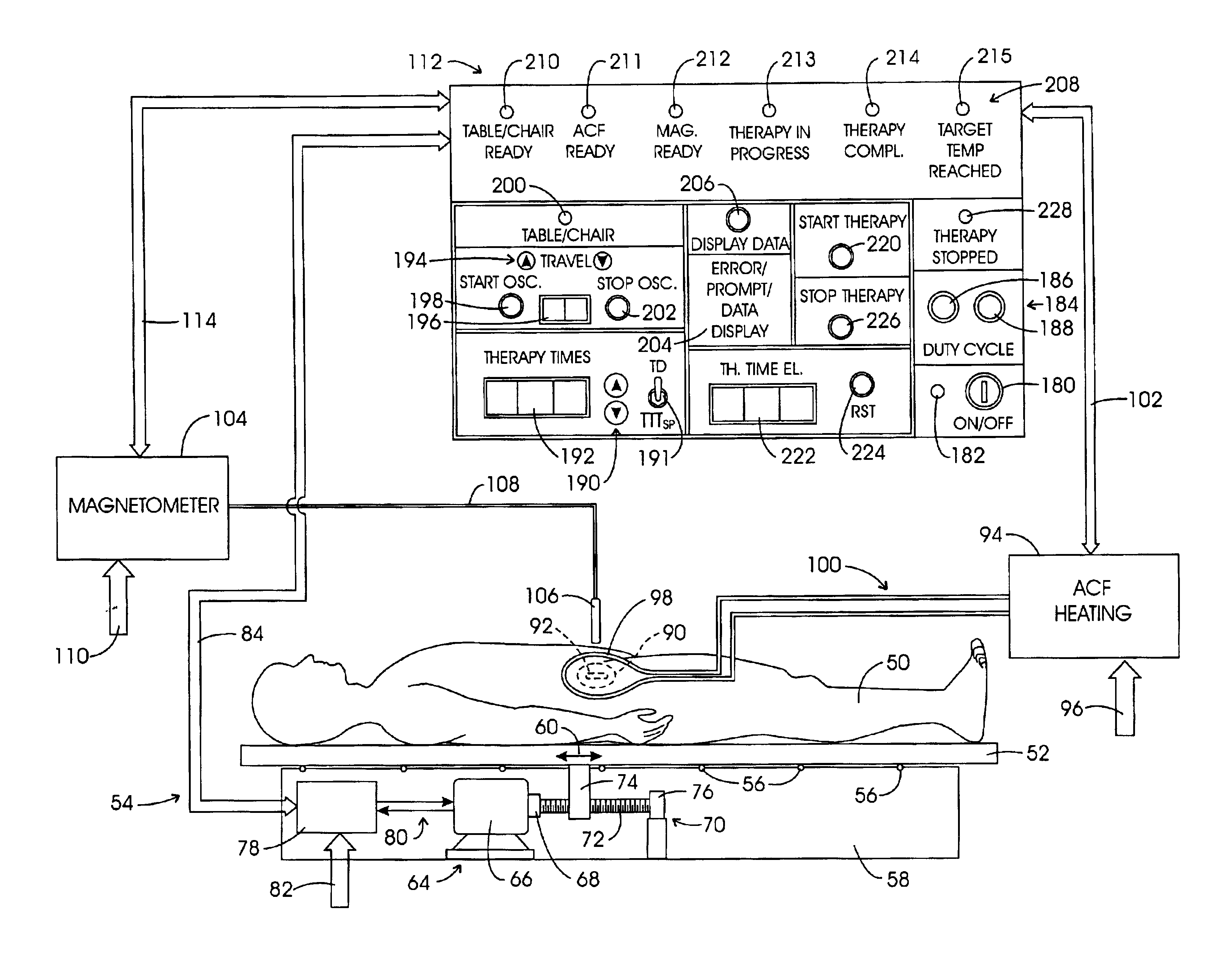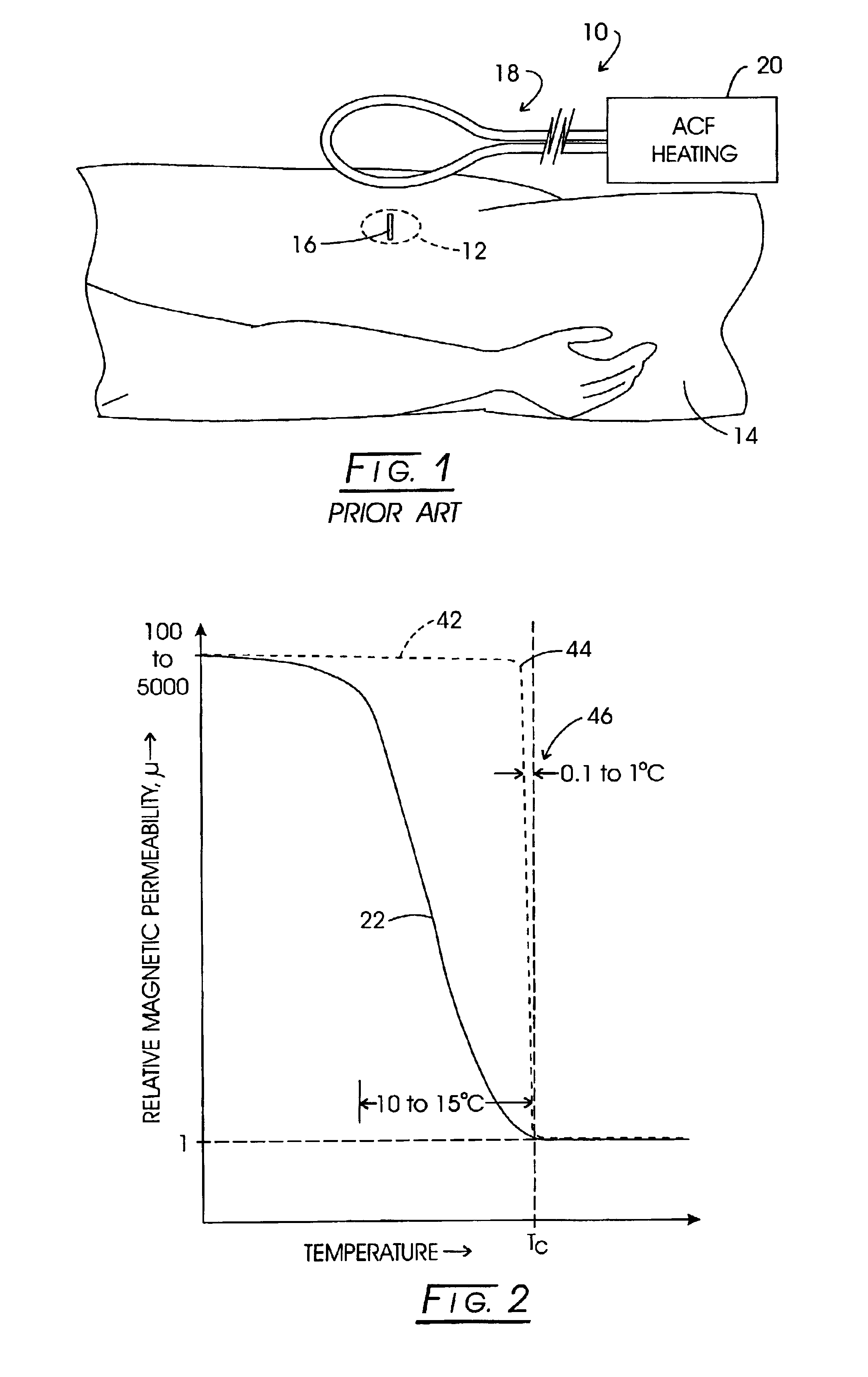System method and apparatus for localized heating of tissue
a tissue and system method technology, applied in the field of tissue localization heating system, can solve the problems of substantial error in approximating modeling methods, invasiveness of monitoring electrical leads extending into the patient's body for this procedure, and temperature elevation of the whole body
- Summary
- Abstract
- Description
- Claims
- Application Information
AI Technical Summary
Benefits of technology
Problems solved by technology
Method used
Image
Examples
Embodiment Construction
[0126]While a variety of techniques for evolving an effective interstitial thermotherapy of target tissue volumes have been approached by investigators, an earlier development deemed somewhat promising involved the implantation of ferromagnetic alloy heaters sometimes referred to as “ferromagnetic seeds” within that volume. The ferromagnetic alloy heaters were adapted so as to alter in exhibited magnetic permeability in consequence of temperature. For example, with this arrangement, when a Curie temperature transition range was thermally reached, permeability would, in turn, diminish over the transition range and correspondingly thermal responsiveness to an applied inductive field would diminish. Thus it was opined that a temperature auto-regulation could be achieved to optimize a thermally based implantation therapy. Such an arrangement is depicted in FIG. 1. Here, the treatment modality is represented generally at 10 wherein a target tissue volume, for example, comprised of neopla...
PUM
| Property | Measurement | Unit |
|---|---|---|
| temperature | aaaaa | aaaaa |
| temperature | aaaaa | aaaaa |
| temperature | aaaaa | aaaaa |
Abstract
Description
Claims
Application Information
 Login to View More
Login to View More - R&D
- Intellectual Property
- Life Sciences
- Materials
- Tech Scout
- Unparalleled Data Quality
- Higher Quality Content
- 60% Fewer Hallucinations
Browse by: Latest US Patents, China's latest patents, Technical Efficacy Thesaurus, Application Domain, Technology Topic, Popular Technical Reports.
© 2025 PatSnap. All rights reserved.Legal|Privacy policy|Modern Slavery Act Transparency Statement|Sitemap|About US| Contact US: help@patsnap.com



